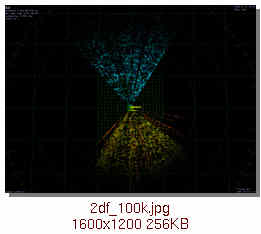Chris,
You really shouldn't tease me like this

I can think of lots of features that would be useful, but I don't know how hard they are to implement, I hesitate to list them all, since it might scare you off

Some kind of depth cueing would be nice.
I'm rashly assuming this would consist of realtime luminosity changes due to changes in distance. One problem I anticipate would be determining how much is appropriate. (hmm. 1/r^2? scaled to some specified luminosity (in the model? in the catalog file? as a slider similar to the one provided for stars? scaled to 0 for the most distant element in the model? There's probably a better way, but I dunno what's feasable.)
Being able to specify the size of the point and line elements would be useful.
That'd help a lot with specifying the "importance" of different elements. Specifying the RGB values (as now) can be used to provide an intensity cue, but the more variables that are available, the more information can be provided in the display.
[added later: but how might this interact with depth cuing? Might it not imply changes of "diameter" with distance? -- perhaps only luminosity cuing initially?]
Sprites would certainly be useful, too.
I'm not sure what this implies, though. I don't know enough about OpenGL and 3D hardware to know how it would be implemented, but
any of the possibilities I can think of would be helpful: An element with fixed pixel dimensions on the screen (thinking of ancient 2D graphics hardware)? Always face-on to the observer? Scaled and rotated at a fixed orientation relative to the underlying model?
Would something like this last concept diffeer a great deal from a texture mapped onto a set of vertices (onto a facet of the model)?
Give me some time to read over an OpenGL or 3D hardware primer, and I'm sure I can think of some more

(I've gotta check on some local network problems right now.)

